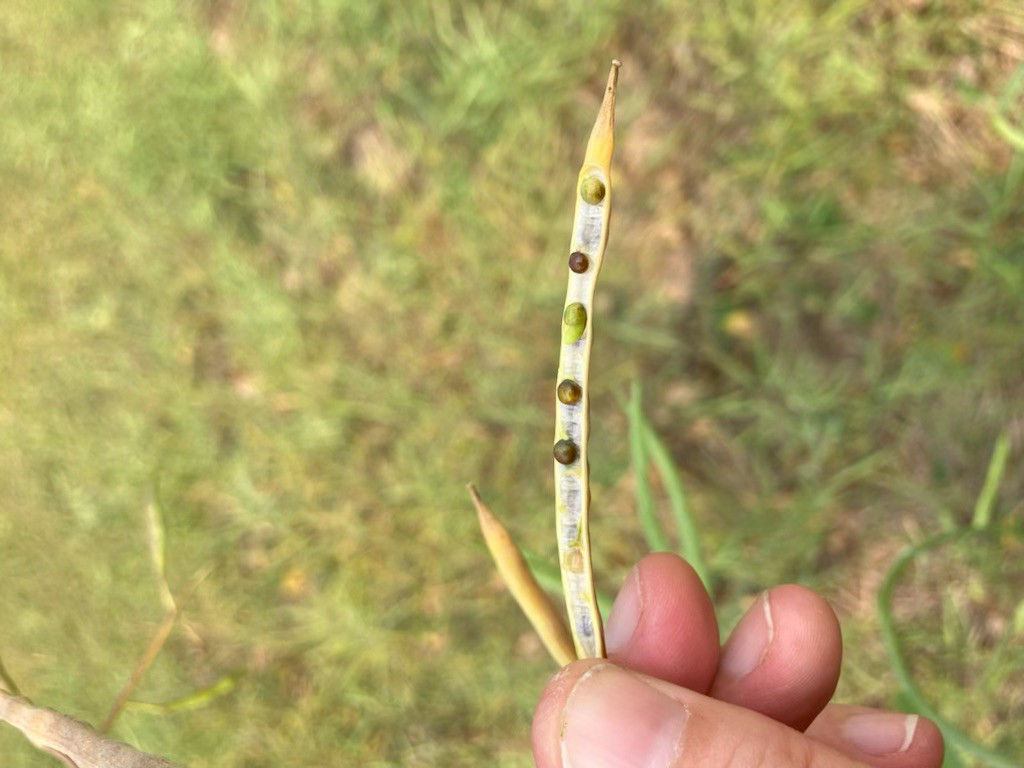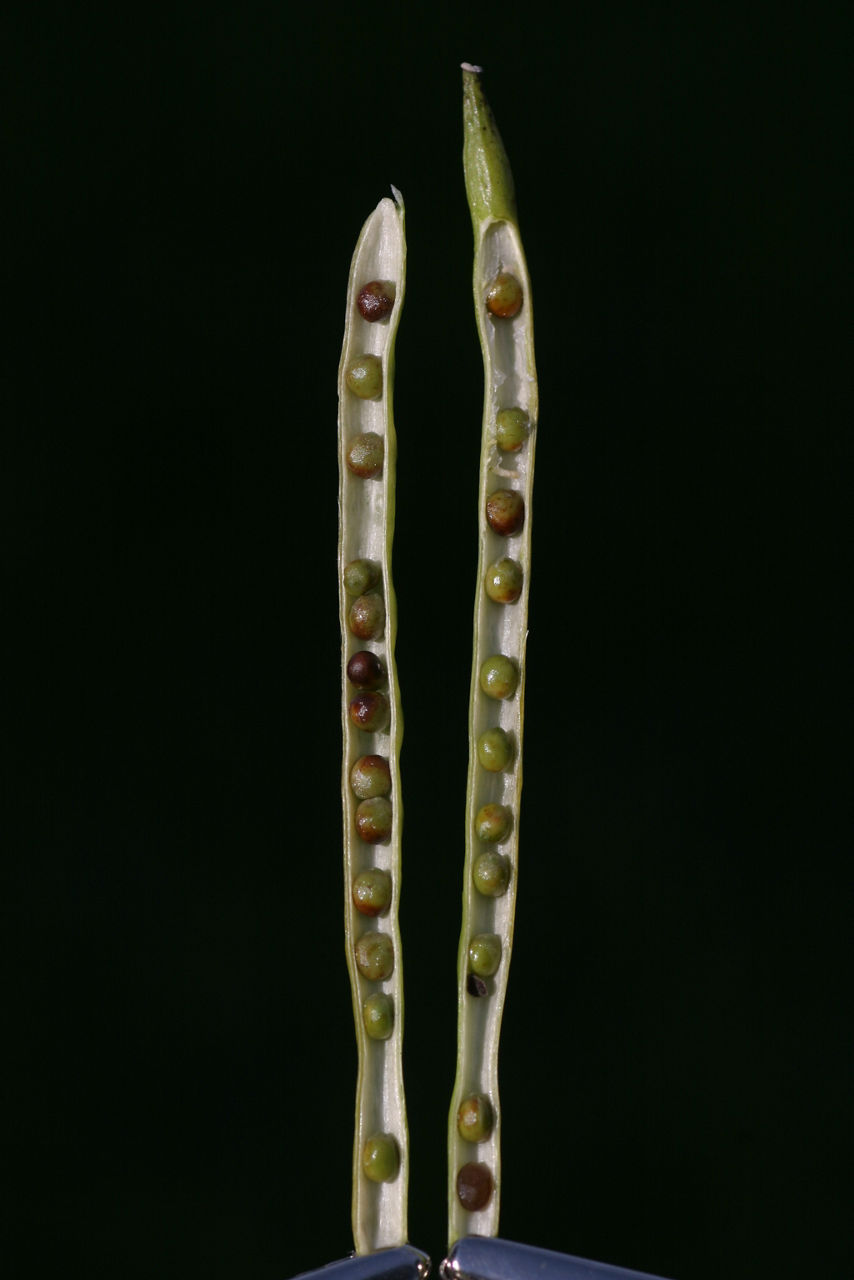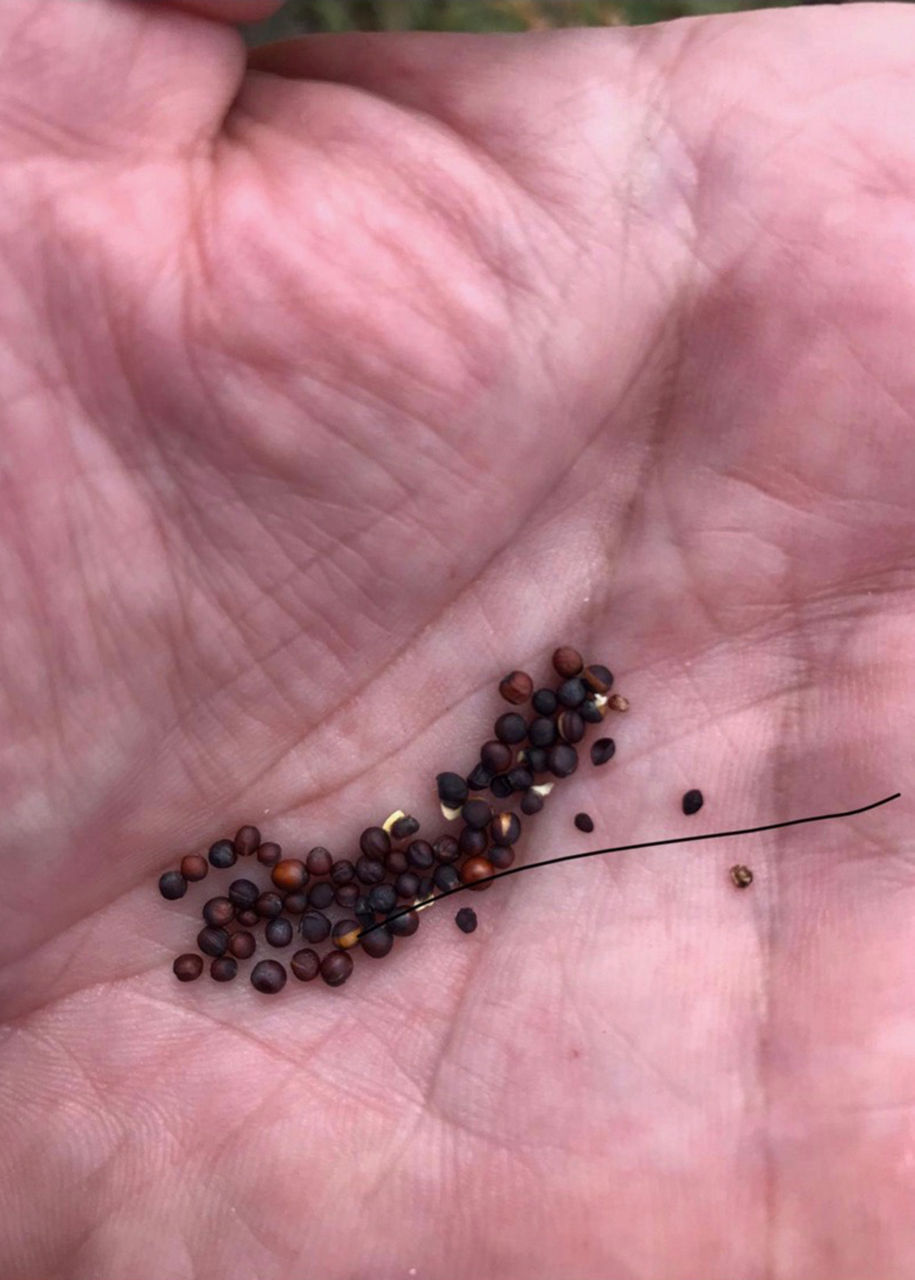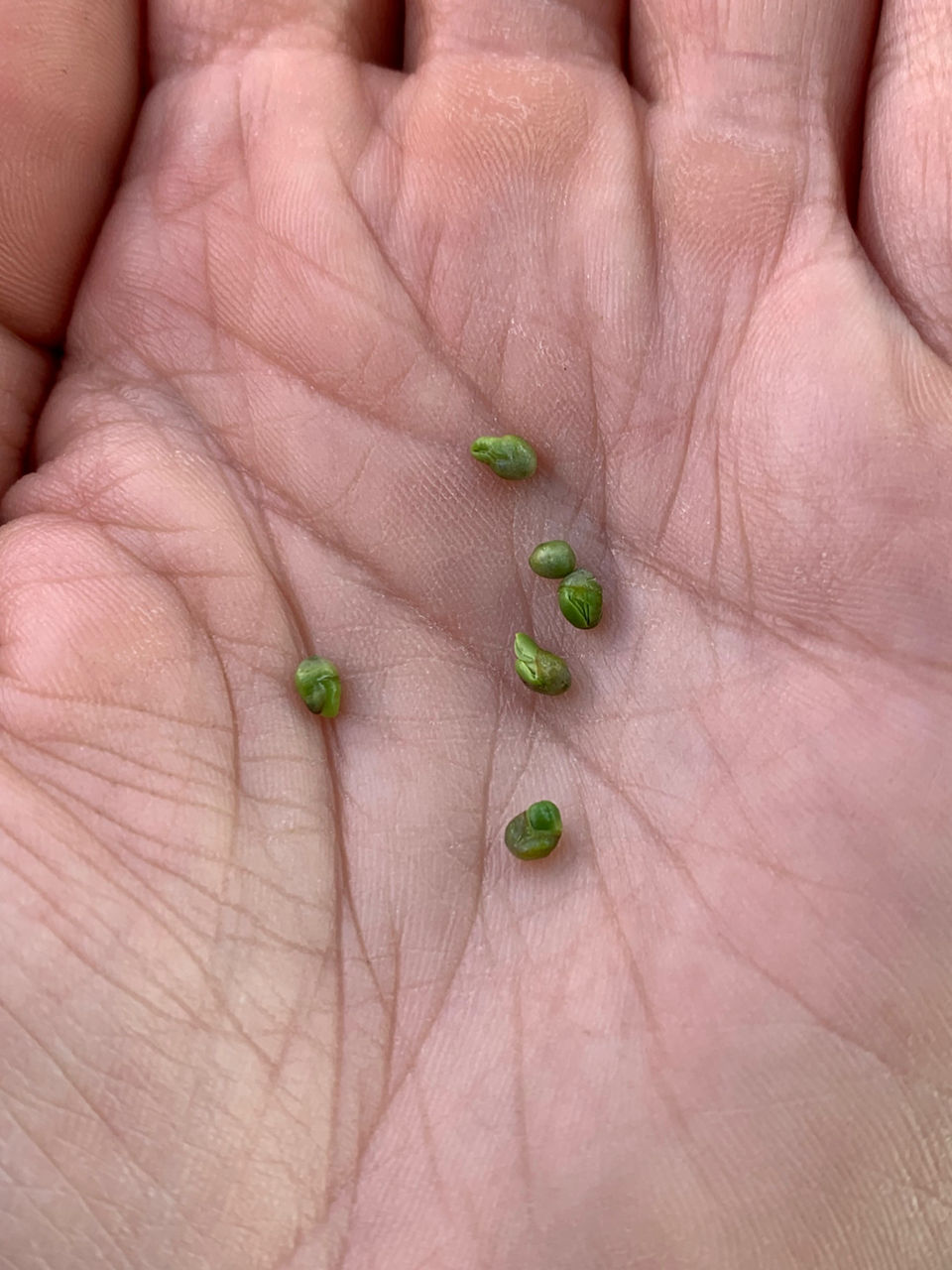3 READ-TIME
Seed Sprouting in Canola Pods
September 9, 2021
A long season of drought and heat stress has affected canola growth and ripening. Producers reporting seed sprouted in pods (precocious germination) are looking for reasons why this occurred and how to manage harvest.
Diagnosis
Pre-harvest scouting is a good time to check colour change of pods and seeds. Sprouted seeds found at this time may be green or have experienced colour change. Alternatively, misshapen seeds could be an indication of an aster yellows infection.

Figure 1. Sprouted seeds may be found in plants with green lower stems and brown tops.
Next Steps
Harvest
When deciding to straight cut or swath, the goal is for 2 percent or less of green seed at grading time.1 Straight cutting works better on thick stands of canola but should not be rushed before green chlorophyll colour has cleared seeds. Swathing should be considered for thin, drought-stressed stands. Because dry plants have a light structure, consider the following:
- Make swaths parallel to prevailing winds.
- Cut plants just below the lowest pod to keep stubble as high as possible.
- Press swaths into stubble with a lower adjusted swath roller.2
Seeds need at least 20 percent moisture to finish maturation and clear green colouration.1 Continued hot, dry weather through harvest operations can lower seed moisture more rapidly than planned for combining.

Figure 2. Normal canola ripening from green to brown.
Grading
Sprouted seed is considered damaged, and grain grades drop based on the total percentage of damaged seed.
- No. 1 canola has no more than 5 percent damaged seed.
- No. 2 canola has no more than 12 percent damaged seed.
- No. 3 canola has no more than 25 percent damaged seed.3


Figures 3 and 4. Seed coats cover much of early sprouts, and it may not appear many seeds have sprouted early when taking a handful of harvested seed.
Storage
Sprouted canola should be dried down to 1 percent less than normal for storage conditions.1 Low test weight grain could be expected in years with drought and heat stress. Shorter storage life is expected for grain with low test weights and poor integrity. The first weeks of canola storage are a time of high respiration, heat, and moisture. Aeration and cooling are critical during this early storage period.
Causes
Heat stress causes a reduction in the plant hormone ratio of abscisic acid to gibberellic acid and is likely the cause of sprouted seeds. The abscisic acid to gibberellic acid ratio plays a role in germination inhibition and seed maturation. Heat stress speeds up germination and causes seedling abnormalities.4
Endosperm and embryo development in canola seed are sensitive to high temperatures. Heat stress alters enzymatic processes and oil-protein ratios. Additionally, drought can reduce nutrient uptake and photosynthesis products.5 These stresses alone and combined lead to lower seed weights.
Continuous wet weather after seeds have dried to 10 percent can lead to sprouting.3 Maturation and dry down could be rapid during drought seasons. Hot (32°C), dry weather can cause canola to change colour from 10 to 50 percent in three to five days or less. Weather favouring drying can lead to seed moisture loss at a rate of 2 to 3 percentage points per day or greater.1 Areas receiving rains after this maturation and dry down have rewetting as a possible cause for precocious seed sprouting.
Aster yellows is caused by a specialized bacterium called phytoplasma. The disease has a low infection rate (1%) for most fields most years.6 Aster leafhoppers transmit the disease, and greater populations of the insect have been reported in the United States during hot, dry weather.7
Sources
1 Kandel, H., Lubenow, L., Keene, C., and Knodel, J.J. 2019. Canola Production Field Guide. North Dakota State University. Northern Canola Growers Association. p. 87. A-1280.
2 Canola Council. 2010. Should growers straight combine a thin crop? CanolaWatch. https://www.canolacouncil.org/canola-watch/2010/08/11/should-growers-straight-combine-a-thin-crop/
3Canola Council. 2019. Pre-harvest scouting: things to look for this week. CanolaWatch. https://www.canolacouncil.org/canola-watch/2019/09/18/pre-harvest-scouting-things-to-look-for-this-week/
4 Brunel-Mugel, S. et. al. 2015. Heat stress during seed filling interfers with sulfur restriction on grain composition and seed germination on oilseed rape (Brassica napus L.). Frontiers in Plant Science. https://www.frontiersin.org/articles/10.3389/fpls.2015.00213/full
5 Elferjani, R. and Soolanayakanahally, R. 2018. Canola responses to drought, heat, and combined stress: shared and specific effects on carbon assimilation, seed yield, and oil composition. Frontiers in Plant Science. https://www.frontiersin.org/articles/10.3389/fpls.2018.01224/full#B76
6 Canola Council. 2016. Aster yellows: what does it look like? CanolaWatch. https://www.canolacouncil.org/canola-watch/2016/08/04/aster-yellows-what-does-it-look-like/
7 Schuh, M. and Hoidal, N. 2021. Leafhopper watch: hot weather and aster yellows risk. University of Minnesota. https://blog-fruit-vegetable-ipm.extension.umn.edu/2021/06/leafhopper-watch-hot-weather-and-aster.html
Legal Statements
Performance may vary from location to location and from year to year, as local growing, soil and weather conditions may vary. Growers should evaluate data from multiple locations and years whenever possible and should consider the impacts of these conditions on the grower’s fields.
Bayer and Bayer Cross are registered trademarks of Bayer Group. Used under license. ©2021 Bayer Group. All rights reserved. 7012_S3_CA
